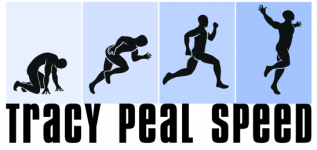Does Stretching Before Running Prevent Injuries?
Around the water cooler of “twitterdom” this week, opinions were flying about about the New York Times article “Phys Ed: Does Stretching Before Running Prevent Injuries?” by Gretchen Reynolds in the Well blog of the Health section (http://well.blogs.nytimes.com/2010/09/01/phys-ed-does-stretching-before-running-prevent-injuries/?src=me). So many people were retweeting this article, I felt compelled to see what all the fuss was about. My interest was piqued after the opening line teaser: “Should you stretch before you run?”
Without going into the whole story, a study was published (on the USA Track & Field website) comparing two groups, one where all of the subjects stretched before they ran and the other which didn’t. After a three month period the results were conclusive – “[stretching]neither prevented nor induced injury when compared with not stretching before running.” These results seem to headbutt common sense on two levels: first, we’ve always been taught to stretch before exercising and second, if stretching doesn’t work, what does?
In the article, Ross Tucker, a South African physiologist, argues that there’s a “reflex” that prevents us from over-stretching and that “static stretching” (held stretching positions like touching your toes) for your warm-up activates this self-protection response inhibiting normal function of our muscles. Dr. Tucker now advocates the “dynamic stretching” used for most elite athletes – more akin to exercises used to “increase your joints’ range of motion via constant movement.” The idea behind dynamic stretching is that the inhibitory reflex of static stretching isn’t invoked and that the brain is more involved in the process improving “proprioception and control, as well as…flexibility.”
The results of this study should come as no surprise. There has always been too much emphasis placed on our muscles. Muscles are essentially “pulling and relaxing” tissues (Romanov, 2010). They are there to serve the movement of our joints as a consequence of our bodyweight interaction with our environment. Since running begins and is sustained by the body involuntarily falling forward, the function of our muscles is to help us get to this falling position more timely. How flexible your muscles are is not the issue.
At the heart of being flexible is the idea of losing inhibition. We are governed by our fears. The reflex that Dr. Tucker mentions does protect us from harm, but it also holds us back. Sometimes, though, those fears are whisked away and we are capable of superhuman feats (the amplified example of being able to pick up a car to save a friend trapped underneath). So, think of flexibility as freedom – freedom of movement which starts with your joints, tendons and ligaments. As you become more free, you will gain more awareness, balance, strength and precision in your mobility. And begin to spend your warm-up prepping yourself for movement, checking your system for readiness and focusing your thoughts.







